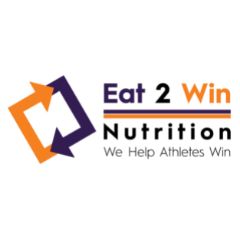Normalizing Changing Bodies and Nutrition needs for High School Student Athletes
High School Sports Medicine, Nutrition and Performance Symposium 1.0
Tuesday, September 27 @ 7 pm CT
This presentation addressed societal, gendered, and athletic pressures around food & body, and how the lack of open conversation around topics such as periods & puberty have caused lasting harm in today's young people. This will include encouraging normalized conversation around puberty, the menstrual cycle & body changes throughout high school. Using her specific Performance Plates model, Heidi Strickler walks through how to practically guide young athletes in adequate & complete nourishment. You will gain both insight into warning signs of under-fueling and RED-S, as well as tools to talk to coaches, parents, doctors, and student athletes about the warning signs and risks.
Q&A for Session #4
You mentioned salt/high electrolyte supplements to aid with bloating. What are your favorite brands? What dosages are you using/recommending?
- Specific dosing is not as much of a priority. Focusing on high salt foods, especially right before and during their period, because of inflammation and fluid loss. The Right Stuff, Liquid IV, and Gatorlight. Look for NSF certified.
What do you recommend for fluid intake in all weight ranges from normal to very overweight? Any resources for these athletes?
- Range of 2-3 L per day for average intake
- For athletes, use a body weight based approach
- Recommend doing 1/2 body weight - 2/3 body weight for small bodied athletes for appropriate amounts
What sorts of fueling recommendations do you make when an athlete is on her period to support that time when she has to be training as well?
- Encourage her to track her cycle so she knows her period is coming. A lot of things she can do prior to the period starting to mitigate symptoms.
- 5-7 days before the period focus on anti-inflammatories, iron- and sodium-rich foods.
- During period, increase calories and carbohydrates due to shift in metabolism and hormones. Knowing some athletes also struggle with GI issues, consider fiber intake (types and amounts) to manage symptoms such as bloating, diarrhea, pain, and so on.
- Pain is primarily from inflammation, so focus on incorporating anti-inflammatory, omega-3 supplements, magnesium, iron, and salt sources/foods.
How do you talk to HS student athletes about hunger cues, especially the ones who have a hard time recognizing hunger?
- Use a hunger scale. Help athletes understand that if you are not used to eating at a specific time, your hunger cues are not there. They need to "wake up" hunger cues with regular eating patterns and develop an adequate schedule.
You mentioned something about a genetic component being a factor to being able to manage plant-based diets better. Can you explain more, please?
- Based on genetics some people are able to thrive really well on a plant-based diet, where others cannot. There is a lot of individual variation amongst people, like absorption differences.
How do you effectively communicate that one can “appear” to be metabolically healthy but still be in a state of LEA and at risk for RED-S? I feel like it can be a hard sell, especially to adolescents/teens.
- Use personal examples, emphasizing that external factors can present as fine, but there's a lot going on internally. If you aren't getting enough energy, metabolism will slow and without energy through intake, you will pull from muscles, bones, heart, etc. If energy isn't coming in orally through food, the body will pull it from other areas.



Facebook comments